 |
 |
|
|
2525 Michigan Ave. A5 Santa Monica, CA 90404
Tuesday - Saturday 11:30 - 6:30 | 310.828.0211
|
 |
|
 |
|
|
|
|
 |
|
DOROTHY BRAUDY
FURTHER SIGNS OF RESCUE
PAINTINGS CAN BE VIEWED AT LAURIE FRANK'S HOME, THE ARTIST'S STUDIO OR MAY BE BROUGHT TO YOUR HOME FOR VIEWING. PLEASE CALL LAURIE AT 323-839-6166

BIG COMBO ALLEY, 2005, OIL ON CANVAS, 32" x 34"
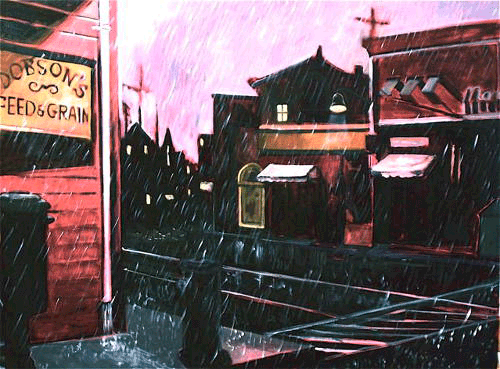
GUN CRAZY RAIN, 2005, OIL ON CANVAS, 36" X 46"

RAW DEAL TAXI II, 2005, OIL ON CANVAS, 31" X 40"

RAW DEAL RANGER, 2005, OIL ON CANVAS, 36" X 47"

DOGS WITH HAND, 1987, OIL ON CANVAS, 38" X 67"
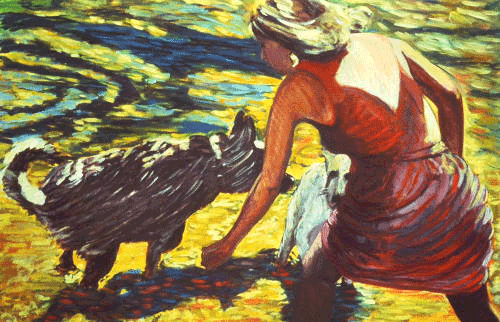
WOMAN MOVING, 1986, OIL ON CANVAS, 30" X 54"
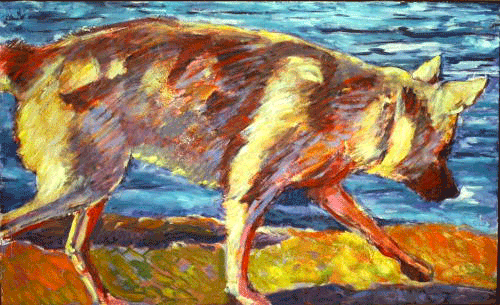
MOVING DOG, 1987, OIL ON CANVAS, 24" X 38"
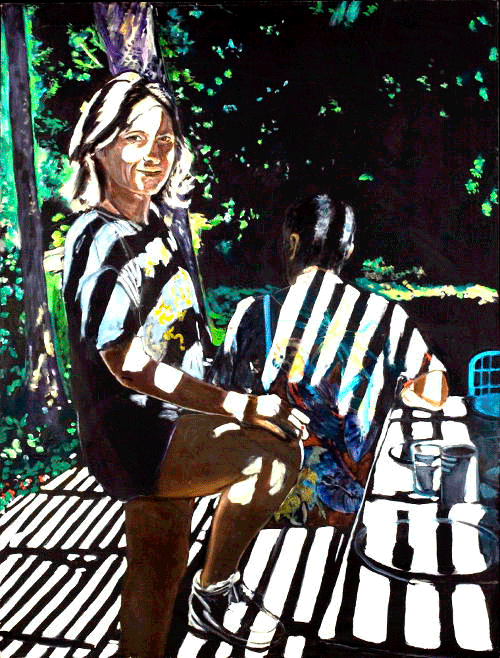
BONNIE & LEO, 1995, OIL ON CANVAS, 46" X 56"
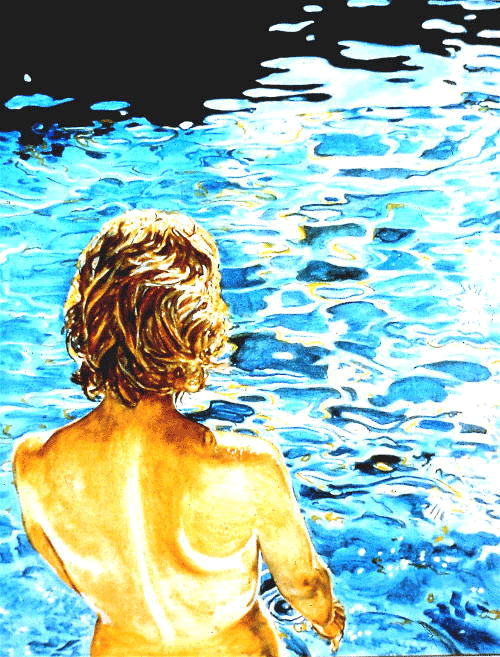
ENTERING I, 1981, OIL ON CANVAS, 49" X 38"
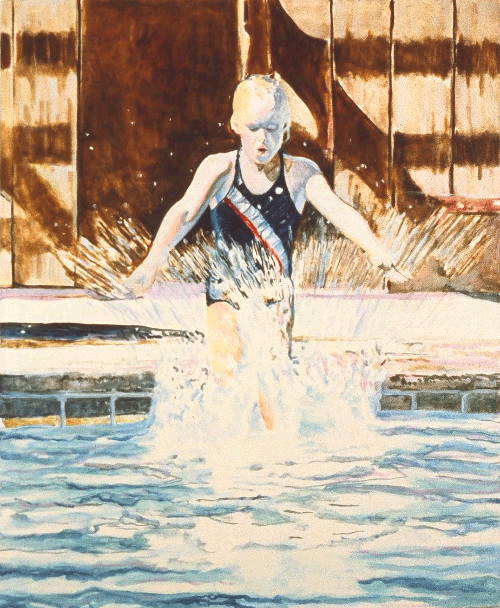
JUMPING, 1979, OIL ON CANVAS, 36" X 24"
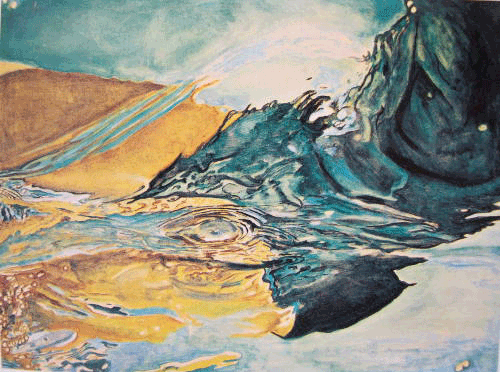
UNDERWATER I, 1982, OIL ON CANVAS, 36" X 48"
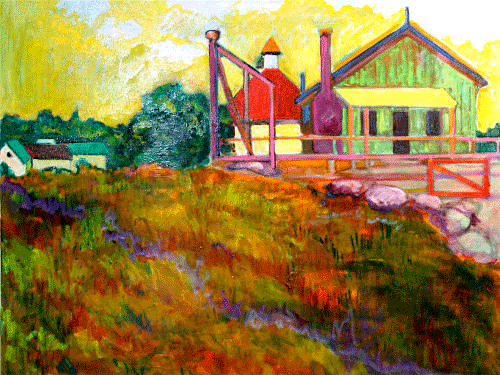
NORWALK, CALIFORNIA - 1917, 2002, OIL ON CANVAS, 24" X 30"

RED POOL, 1999, PLASTER ON CANVAS, 36" X 54"
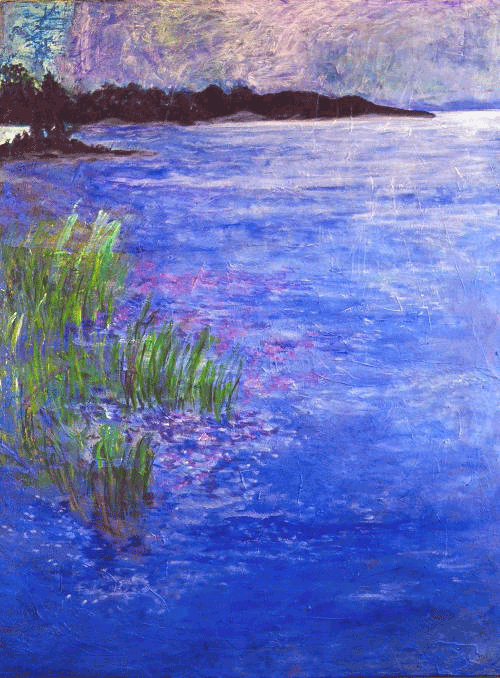
WATER ABSTRACTION, 2001, OIL ON CANVAS, 48" X 36"
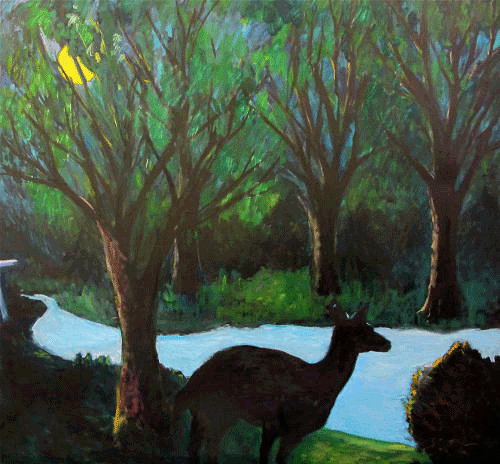
SUMMER NIGHT, 1987, OIL ON CANVAS, 42" X 51"
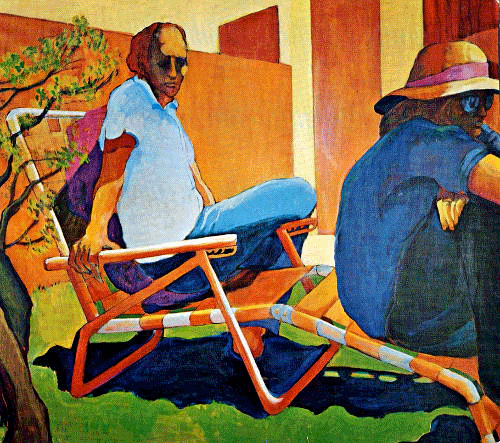
BONNIE & SHERIDAN, 1978, ACRYLIC ON CANVAS, 42" X 50"

THAYER POOL, 1976, OIL ON CANVAS, 42" X 51"
"The following reproduces a personal letter written by Del Kolve to Dorothy Braudy, without thought of publication. It is published here, only lightly revised, with his permission." Del Kolve is a UCLA Foundation Professor of English, Emeritus, whose books on literature and the arts in the Middle Ages are published under the name V.A. Kolve.
Dear Dorothy,
I've been meaning to write you about your new web site Dorothy Braudy.com and my adventures in visiting it over a period of two months or more. It has been a joyous experience each time, with its two videos confirming so many things the paintings say clearly and beautifully on their own.
I'm struck, first of all, by your love affair with painting: with strong, brilliant color, with light and shadow, line and mass. But I'm also moved by what the paintings show of your love affair with life: your relationship with friends, both male and female, your love of children and animals, meals and conversations, all highly particular, each encounter caught in its own moment, bathed in a love-affair with light. The titles leave no doubt about that, naming their subjects, locations, and dates with affectionate precision. No pretentious recourse to "Untitled I, II, or III" for you—because that isn't where your art comes from, nor where it wants to go. It is drawn instead from family and feast, from relaxed moments of ease and abundance, and towards whatever an artist can do to save them from time’s insistent erasure.
But I read in this archive a long history of personal bravery as well. As you say in your interview with Dorothy Lyman, you came of age at a time when “serious painting” had little time or place for women painters, much less for the subjects and experiences women often value most. Only the heroically scaled, rigorously abstract and aggressively macho really mattered. Because that recipe didn't work for you, you had to find another, with your unfailingly gentle, apparently tentative manner masking an iron will. You “did it your way" (you should forgive the expression) with an integrity that will be further honored as "women's work" continues to be reassessed and given its rightful place within many canons. That's happening on a large scale, and your work stands ready for inclusion in it. I'm especially sympathetic to the choices you make because I came upon the work of Diebenkorn and Nathan Olivera at the same time you were first discovering them. Because they each spent a few years as "artist in residence" when I was teaching at Stanford, the return of "the figure" in serious painting (a return of the repressed?) seemed to this medievalist even then as natural and necessary as could be.
Seeing your early work from the '60's through the '80's has been a revelation: so varied, so beautiful, and to me, almost entirely new. Even the abstractions and semi-abstractions—you could hold your own in that playing-field, if you wanted to—prepare one for the love-affair with color and mass and stripes in the representational pictures to come. I was delighted to find stripes already doing their work in a railing in the background of "Table, 1956," with the stripes in later pictures from Greece echoing my own memories of beach-front tables there, comfortably shaded so.) Some other newly-met favorites from the early days: "David with Leaves, 1968;" "Fitz Reading, 1968;" "Richard Leaving, II, 1977." From the Landscapes, "Umbria I, 1998," and "Stairway, 1975," and among the Nudes several that celebrate the relaxed intimacy of women at their ease together—"Nude 10" offering a fine example. I sense a Matisse-like confidence in your devotion to color and shape and the aesthetic right-to-place of servicable, non-hieratic subjects. "Vermont Sink, 1974," for instance, is at once splendid and very simple; a construction in blues and blue-greens, presented straight on in almost palpable light. The Negative Paintings find new reasons for saturated, surprising color, especially in the alarming, apocalyptic sunrise you call (in two pictures) "Eastern Shores." Your exquisite aquatint of "Dylan and Caitlin, 1997" haunts my memory; those doomed lovers deserve no less. I don't know what your "oil on plastic" medium might be, but there are some terrific works in it, such as the small "Rescue” with a blue boat, and "Falcon, 1994." I remember "New York Restaurant, 1981," all in green and blue with a wonderful tree, and the many pictures of pools, of the ocean, of a friend, a dog, a child. "Round Randolph, 1984" revives a shape little used these days, yet is brimming with confidence. The Bellagio pictures gave me pleasure too, recalling a magical place that I've been privileged (like you and Leo) to know well. The lovely "Breaking Light, 1986," though new to me, dates from the year Larry and I first arrived in Los Angeles, when we all first met, just as "Leo with a Hat," its title when we bought it, marks another milestone in our friendship — though it’s here called "Panama, 2004"! Let’s re-title it "Leo with a Hat / Panama, 2004," leaving your biographers to wonder why there's no further record of the time you spent there…
"Scenes from domestic life" then, yes indeed, but not the quiet, provincial, nineteenth-century sort of life such a title might lead one to expect. Scènes de la vie quotidienne would represent your subject better, for it’s a life that’s been lived (with unassuming modesty and grace) in sophisticated, sometimes glamorous places, in the company of interesting, unconventional friends. A body of work snatched from life’s flow: pleasurable vacations, dining with friends, playing with children, resting with dogs. Like home photos on simple cameras from the ‘40’s and ‘50’s, the paintings are often oddly framed and cropped, caught on the run or in an odd regard. But this (only apparently) relaxed approach to composition argues for their truth to life, while also yielding fresh ways of organizing the picture space. Sometimes in the spaces between it even gives birth to striking semi-abstract forms. I love the bodies conversational, the bodies interrupted or at ease, the attention you pay to the things that create distance between well-meaning people as well as the intimacies that bind them together.
Your website, it seems to me, constitutes very precisely the grand retrospective you dreamed of self-curating in the 2000 interview with Dorothy Lyman. And I think it's a triumph. "What's a woman painter to do," you asked then, and "What's she to do with all these paintings?" The answer, of course, is “You've done it.” The paintings exist; they've already been seen, admired, and a good many purchased in a long series of gallery shows; and now they can be viewed comprehensively on the web. But their fullest life (for they are full of life) is still ahead.
Bravo, Dorothy!
Del
P.S. Your photographs too, all of them new to me, seem to me worthy of a book.
|
|
|
|
©2011
All Rights Reserved. Frank Pictures Gallery. |
|
|
|